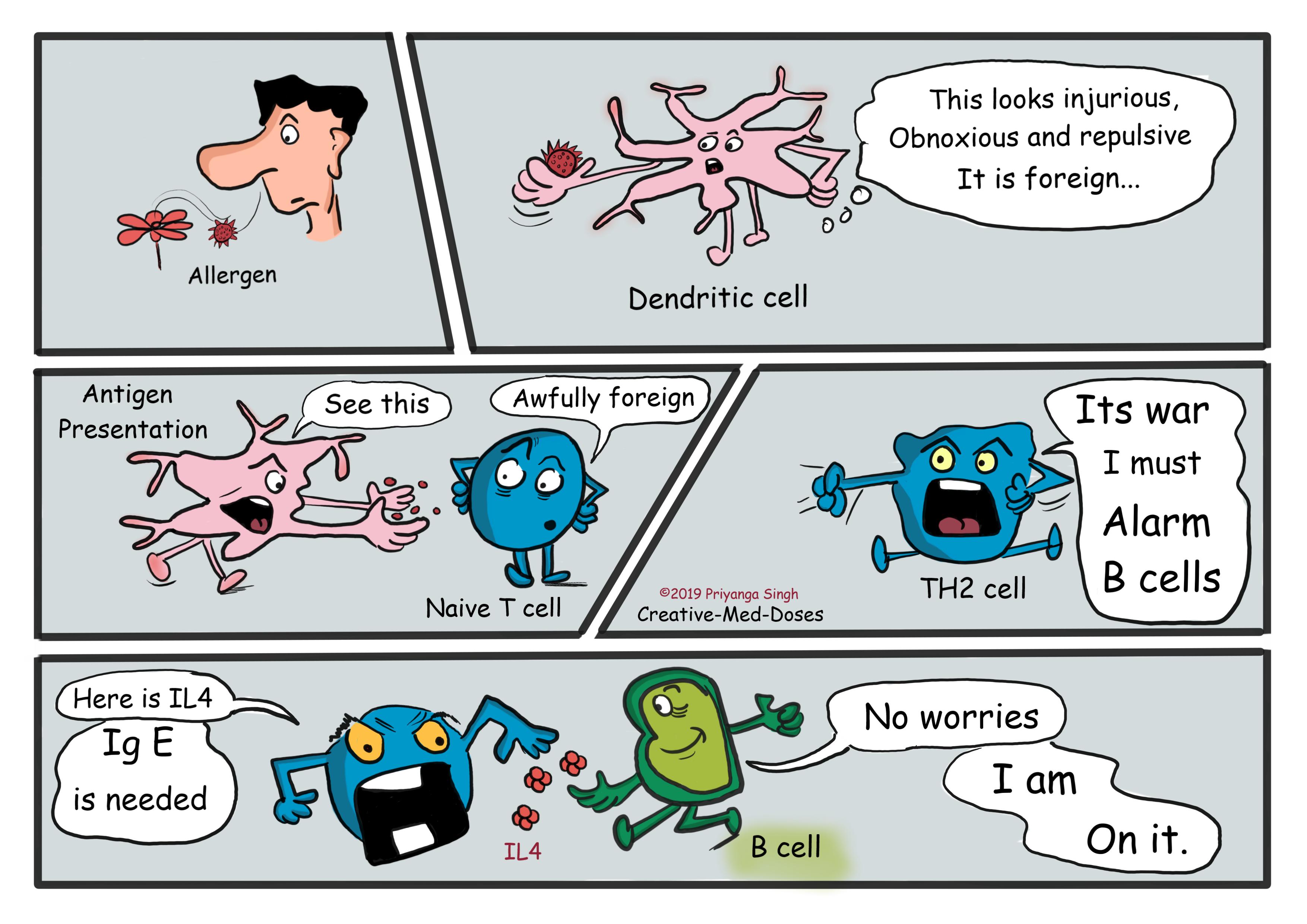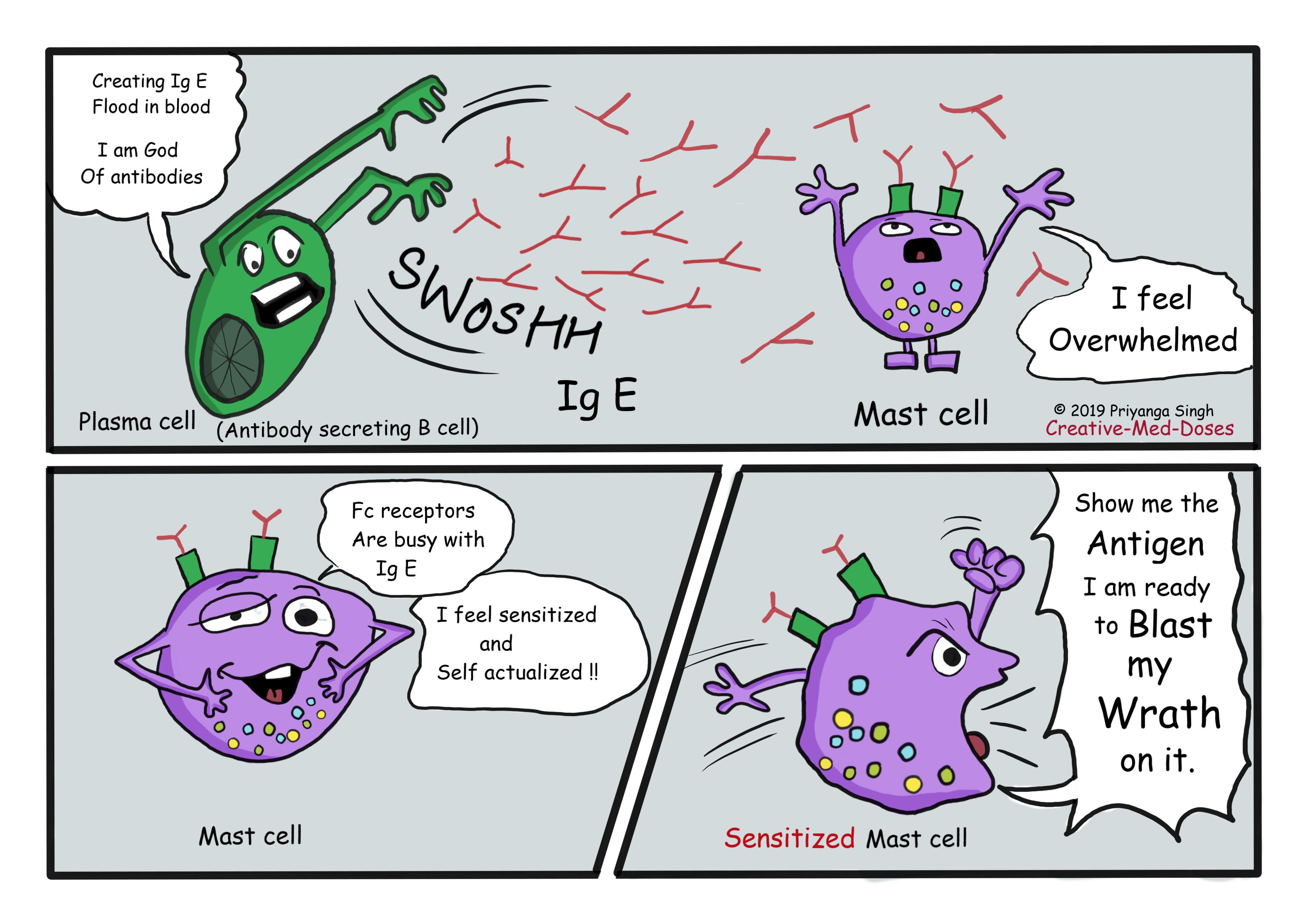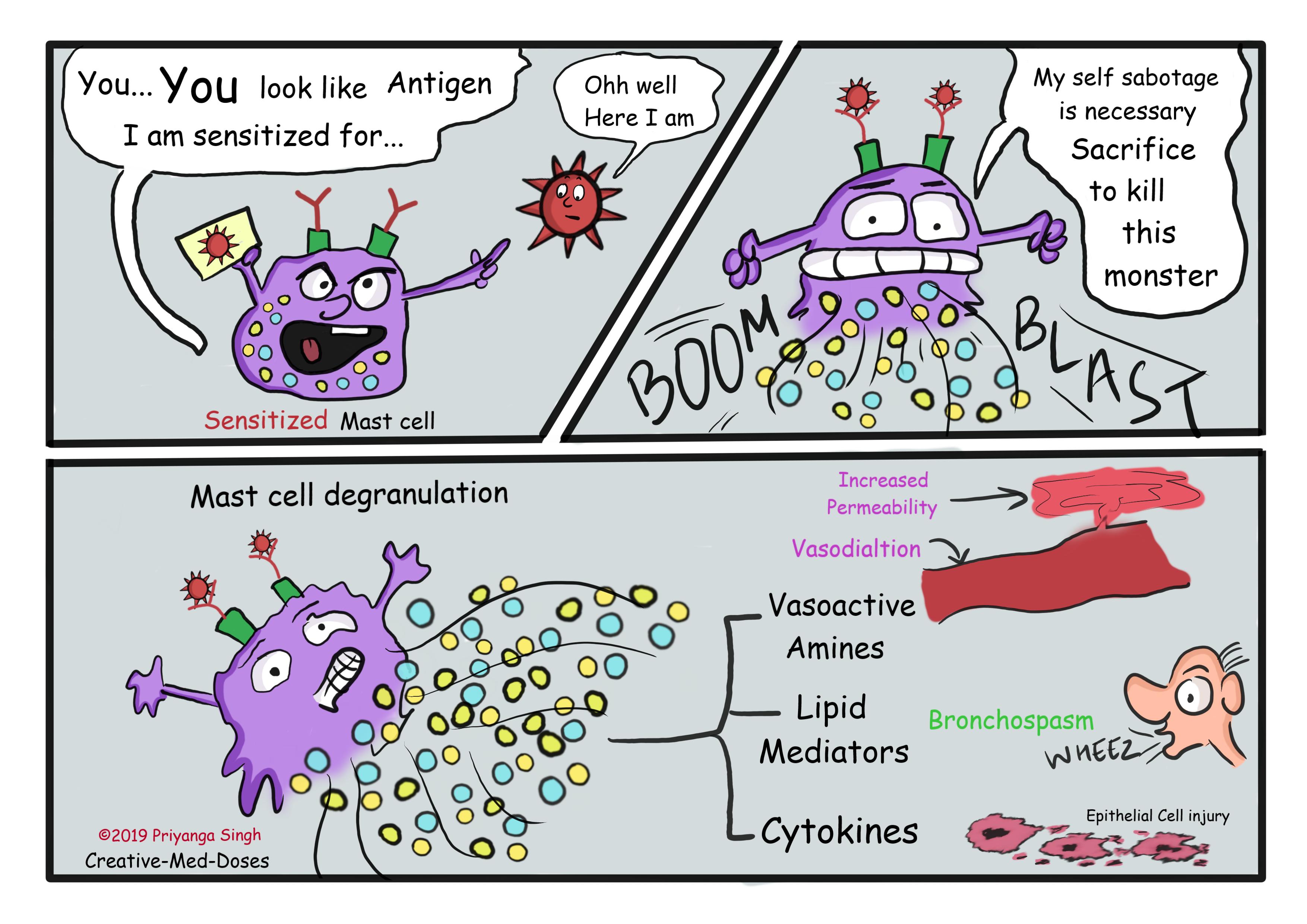Type 1 hypersensitivity: Immediate
Type 1 hypersensitivity is a tissue reaction that occurs within minutes after the interaction of antigen with IgE antibody bound to the surface of mast cells (sensitized mast cells). The reaction is initiated by entry of an antigen, which is called an allergen because it triggers allergy. Allergens are products for which certain individuals are predisposed to developing allergic reactions against (pollens, nuts, certain fragrances, or anything foreign which can trigger allergy even drugs).
...

...

...

...
In immediate (type I) hypersensitivity, is also called allergy, Mast cells release mediators that act on blood vessels and smooth muscle as well as cytokines that recruit and activate inflammatory cells.
Main cell -TH2 cells
Main antibody -IgE
Important mediators
- Vasoactive amines- Histamine which induces vasodilation, increased vascular permeability, smooth muscle contraction, and increased secretion of mucus.
- lipid mediators- prostaglandins and leukotrienes cause bronchospasm and increased mucus secretion
- Cytokines- TNF and chemokines recruit and activate leukocytes, and secretion of IL-4 and IL-5, this way cytokines amplify the TH2-initiated immune reaction.
Step wise cellular response
- Activation of TH2 cells
- Production of IgE antibody
- Mast cell sensitization
- Mast cell reexposer to antigen and activation
- Release of mediators
Two well-defined phases of immediate Type I hypersensitivity reaction
- The immediate response- it is induced by mast cell granule contents and lipid mediators and is characterized by vasodilation, vascular leakage, and smooth muscle spasm, usually starts within 5 to 30 minutes after exposure to an allergen and subsides by 60 to 80 minutes.
- Late-phase reaction- it is activated mainly by cytokines, usually sets in 2 to 8 hours after immediate response, it may last for several days. Late phase is characterized by inflammation and tissue destruction (epithelial cell injury). The dominant inflammatory cells in the late-phase reaction are neutrophils, eosinophils, and lymphocytes.
Examples
- Anaphylaxis- Fall in blood pressure (shock) caused by vascular dilation and airway obstruction due to laryngeal edema and bronchospasm. It can be caused by drugs, bee sting and certain food products, few people are genetically prone for more severe reactions.
- Asthma-Airway obstruction caused by bronchial smooth muscle hyperactivity and increased mucus secretion.
- Allergic rhinitis (hay fever) and sinusitis- May be caused by dust or pollens or fragrances, increased mucus secretion and upper airway inflammation is seen.
- Food allergies- some food work as allergen, causes increased peristalsis, vomiting and diarrhea.
Subscribe to get latest updates, stay tuned for more....
Further reading https://youtu.be/2tmw9x2Ot_Q
Revision day for https://creativemeddoses.com/topics-list/necrosis-vs-apoptosis-six-major-differences/